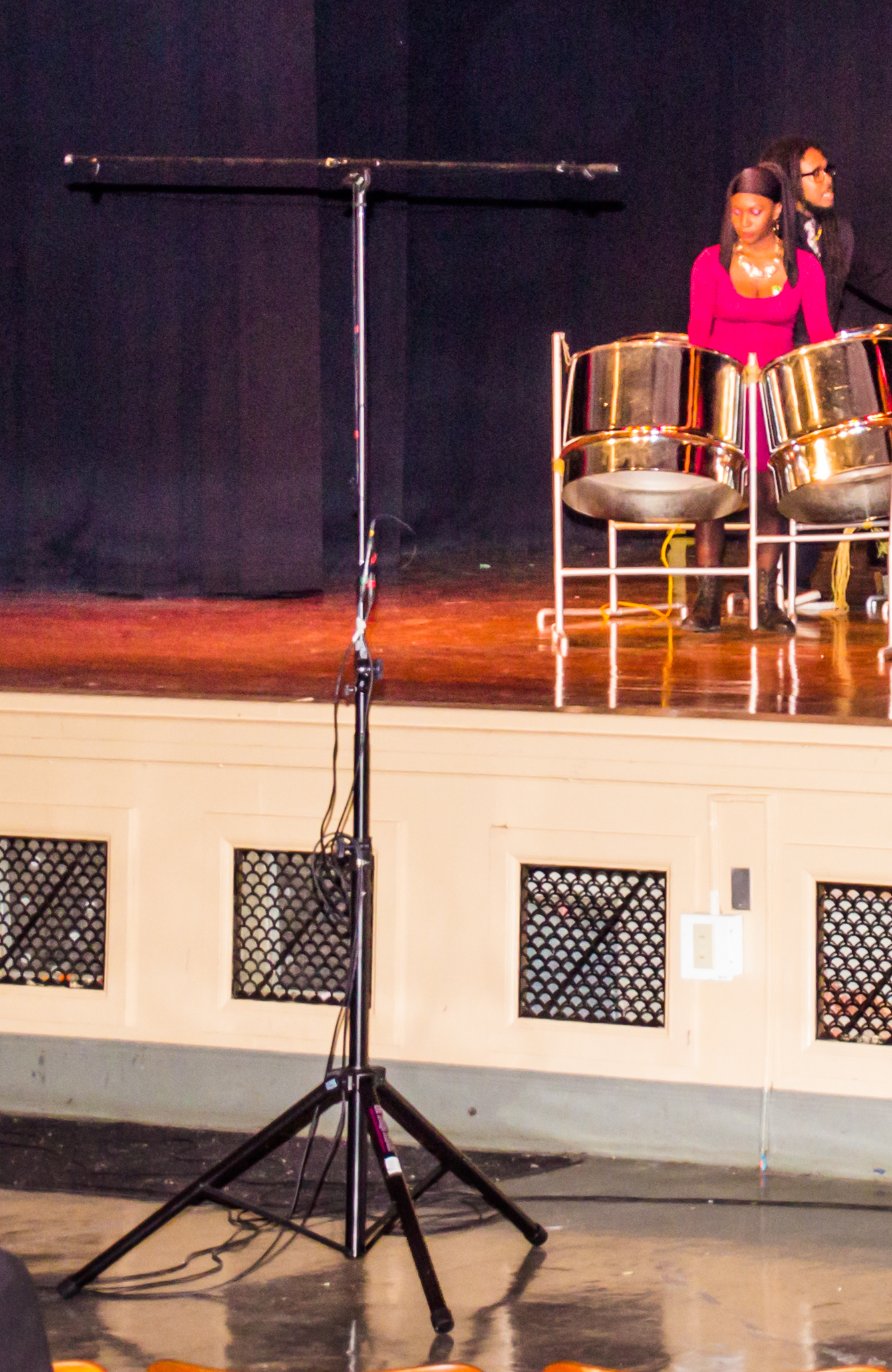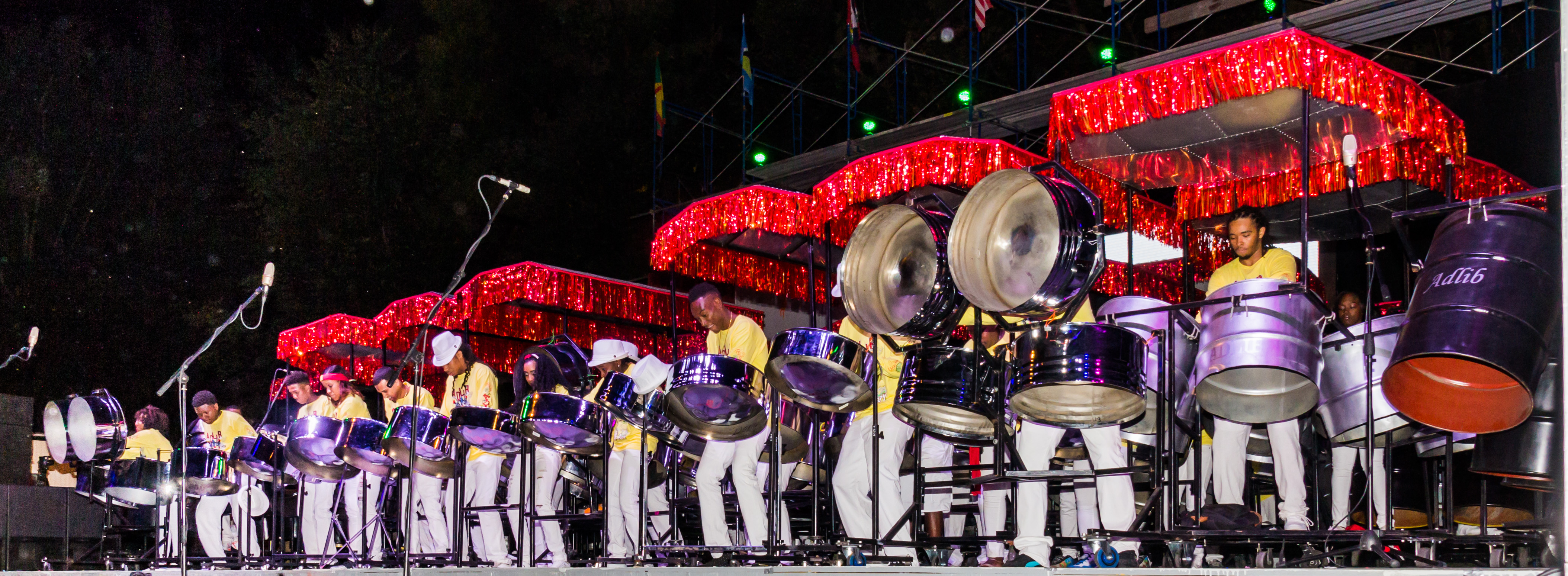 On Stage Large Boom Stand with Spaced Omni Microphones, Brooklyn Christmas Steelband Concert
On Stage Large Boom Stand with Spaced Omni Microphones, Brooklyn Christmas Steelband Concert
Microphone Placement:
Correct placement, spacing, and for other than omnidirectional microphones, aiming of the microphones is critical to getting a good recording. With orchestral recording, the intent is for the microphones to pick up a good blend of all the instruments, similar to what you hear with your ears. For this to occur, the microphones must be located some distance in front of the orchestra. If you place the microphones too close to the front of the orchestra, your recording will contain far too much of the instruments nearest to the microphones. If you place the microphones too far away, you will likely get too much of the room acoustics (reverb, noise). If there is a live audience present, you may well hear too much of the audience in the recordings.
For recording steelbands I typically try to set the microphones 10 feet or so in front of the orchestra, closer if the acoustics aren't ideal and/or the number of musicians is small and they are close together, further back if possible if there are a large number of musicians, like a Panorama side. I often end up closer than I would like, due to space constraints or the presence of an audience sitting close to the orchestra. If patrons are sitting very close, I may ask people not to sit in the immediate area of the microphones, if the people running the event are agreeable. It is not their physical presence that is the issue, it is that they all too often will start a private discussion in the middle of the recording, or will develop a sudden bad cough!
When making scheduled recordings during what otherwise are rehearsals, such as "panyard" recordings, I will typically block off the area for some distance around and for the width of the band in front of the band, sometimes with caution tape. One or two people in this space will have a negligible effect on the recording as long as they don't talk, but a crowd will soak up the high frequencies. Your front line will sound very dead.
More Mike Placement on Page 9
